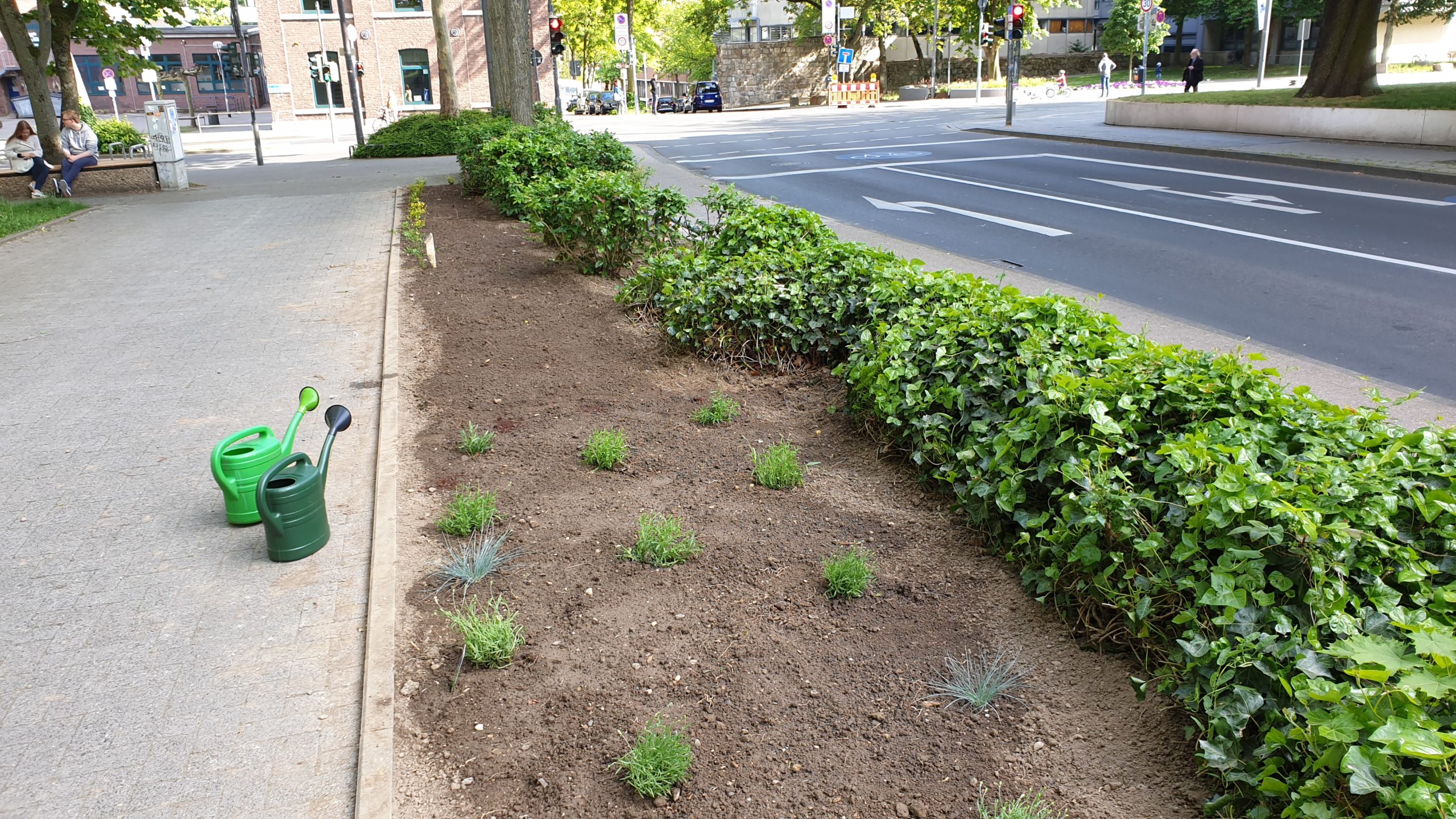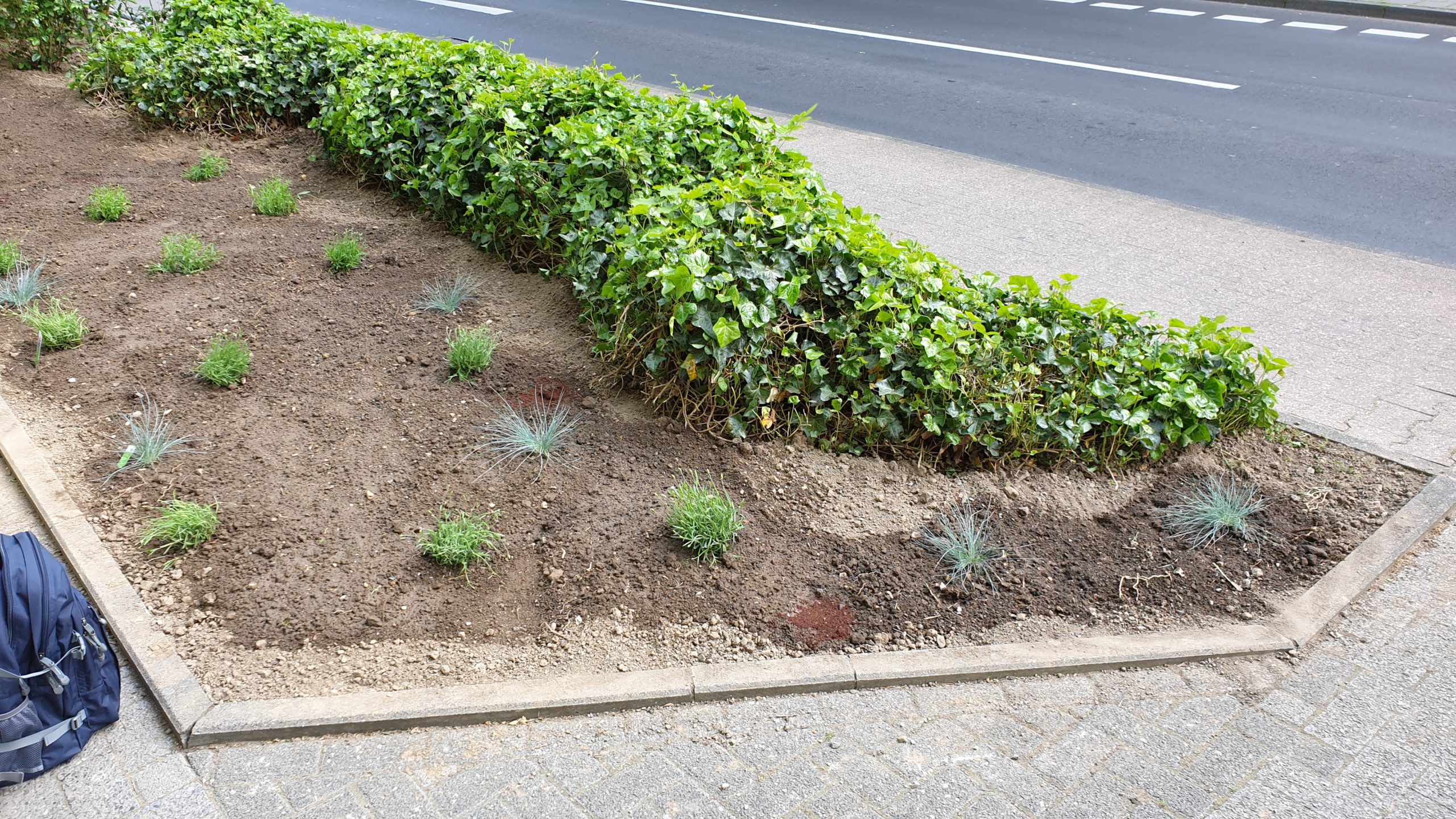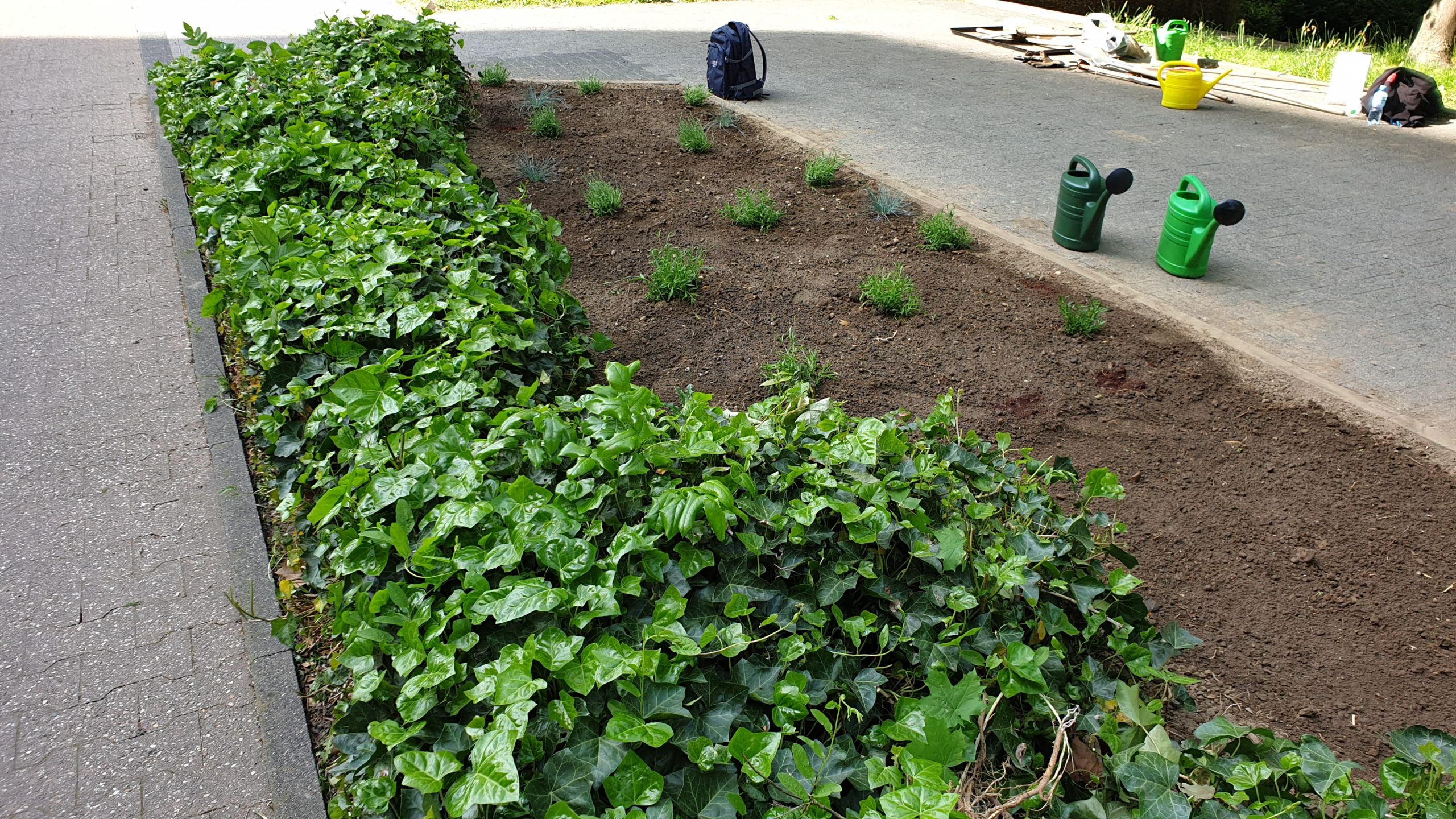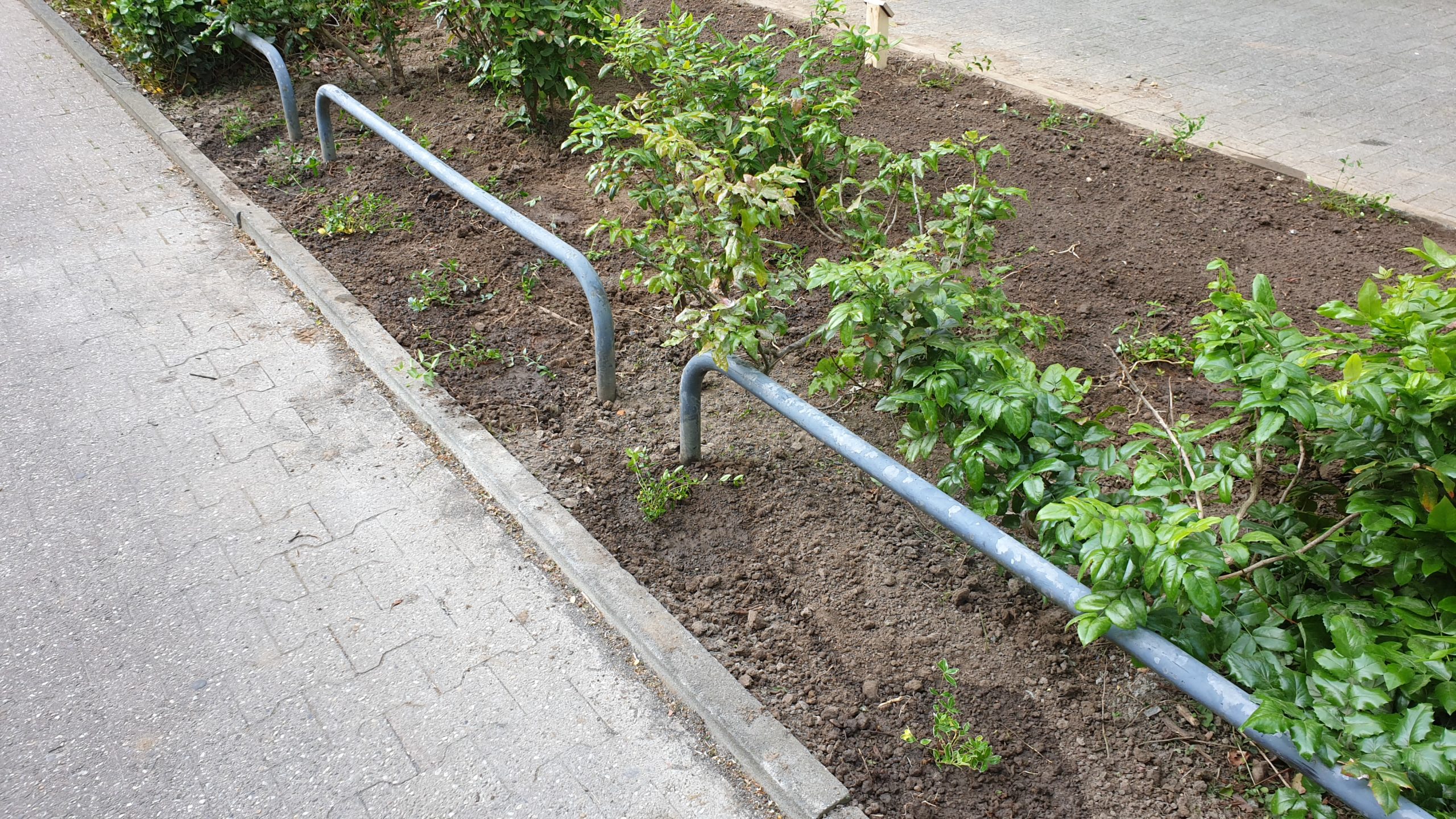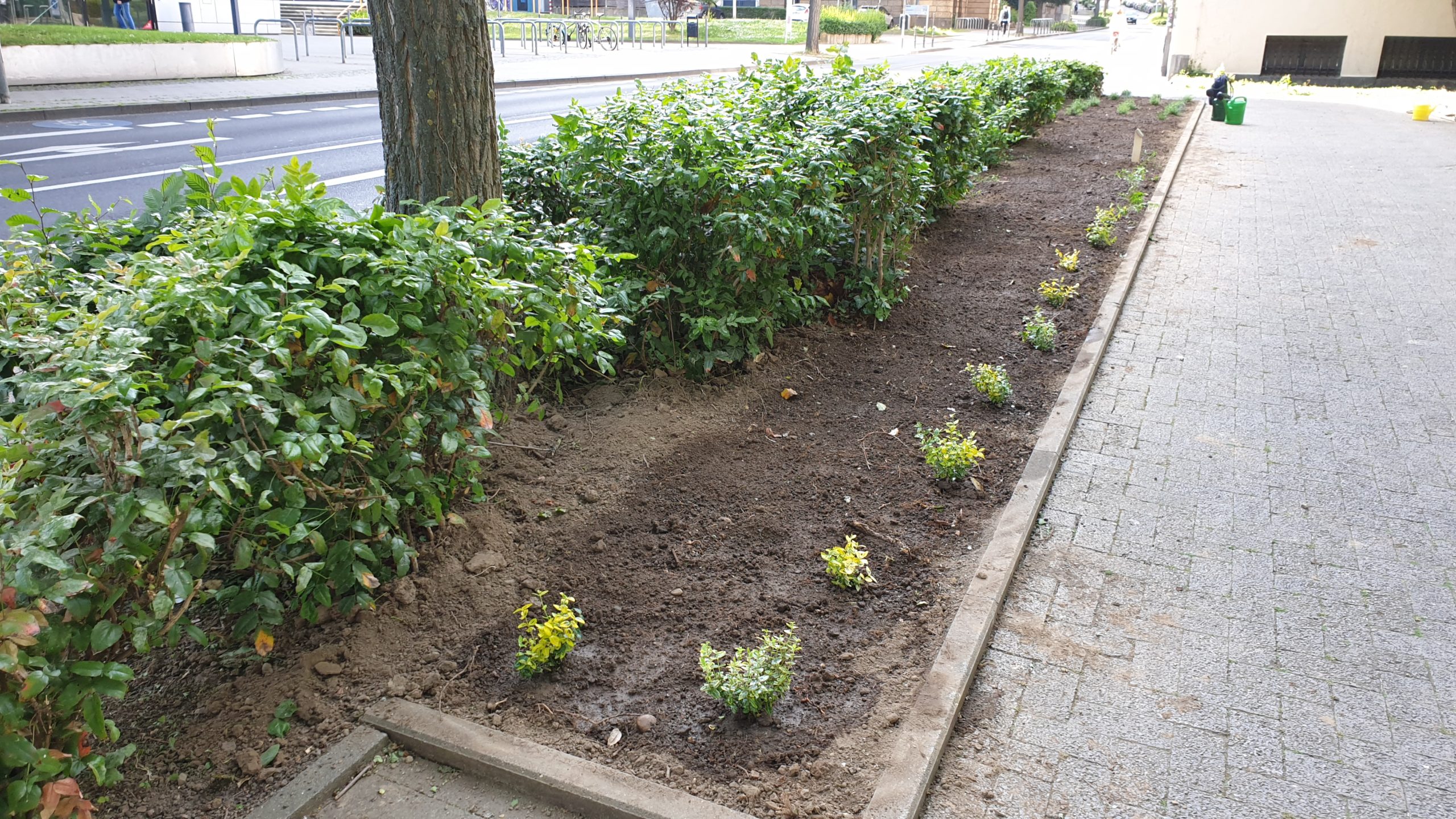05.03.2022
Spring is slowly coming and it shows that planting the bulbs at the end of last year was worth it: There are already a few snowdrops in bloom, many crocuses and the first daffodils are also blossoming.

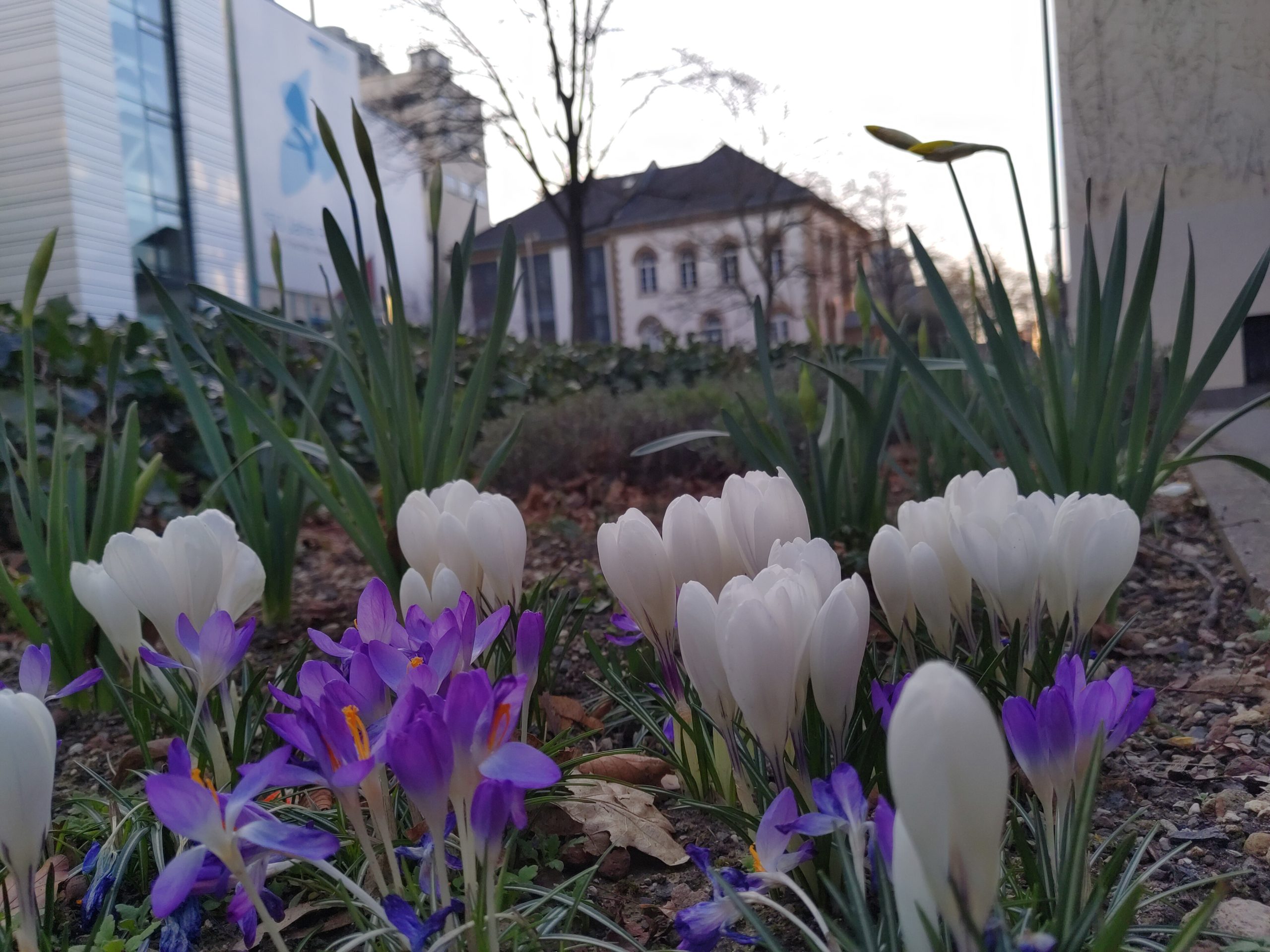
22.10.2021
Today we planted a lot of bulbs – as we did last year – because the city had removed some of the bulbs planted last year during their tree planting campaign. Thankfully, the city has now reimbursed us for these 🙂
In addition, we have winterised the bed and therefore pruned the lavender, for example.
Here are some more photos of our sunflowers from the summer:
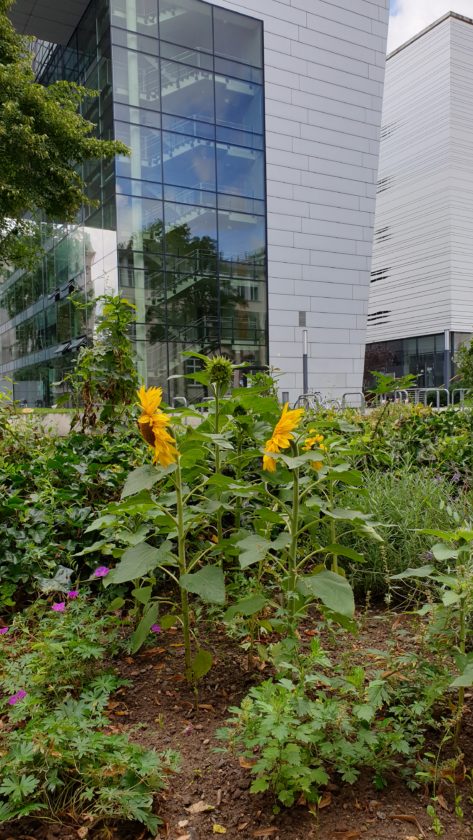
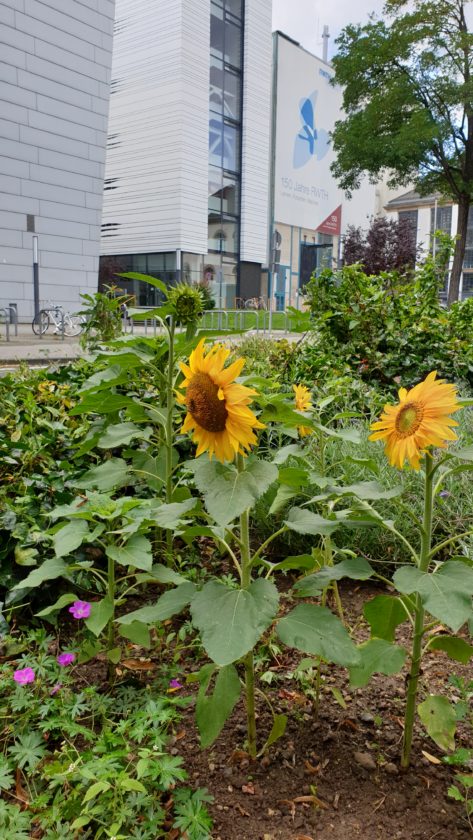
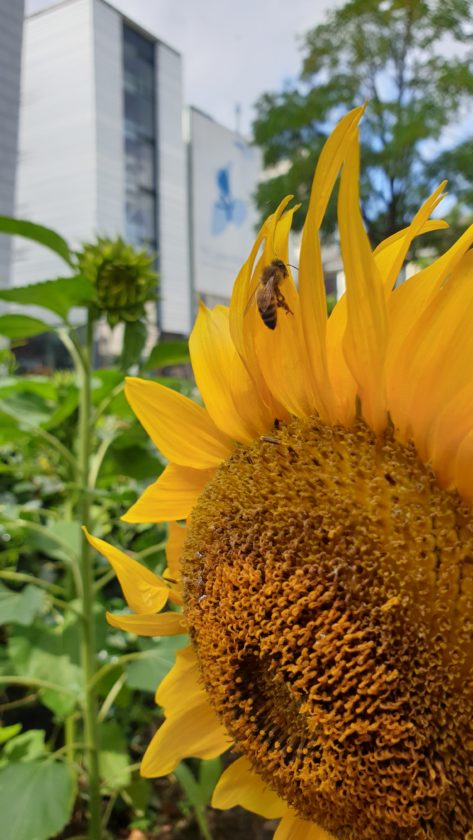
26.03.2021
Spring is just around the corner: Now we have finished planting our bed for the time being.
We bought bee-friendly flowers at the garden centre and transported them to the bed by cargo bike. Into the soil came:
24x cranesbill (four different species)
12x columbine
11x lavender
10x phlox
8x cinnamon herb
8x woodruff
We now hope that all the flowers will grow and that we will soon have a flower paradise on campus.
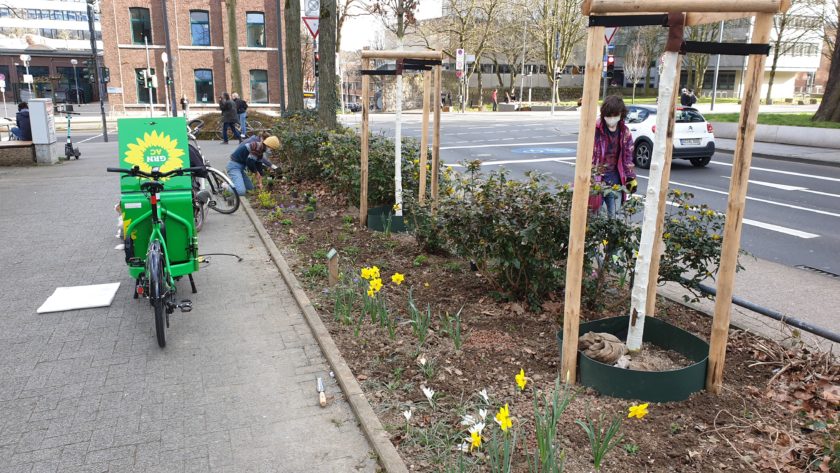
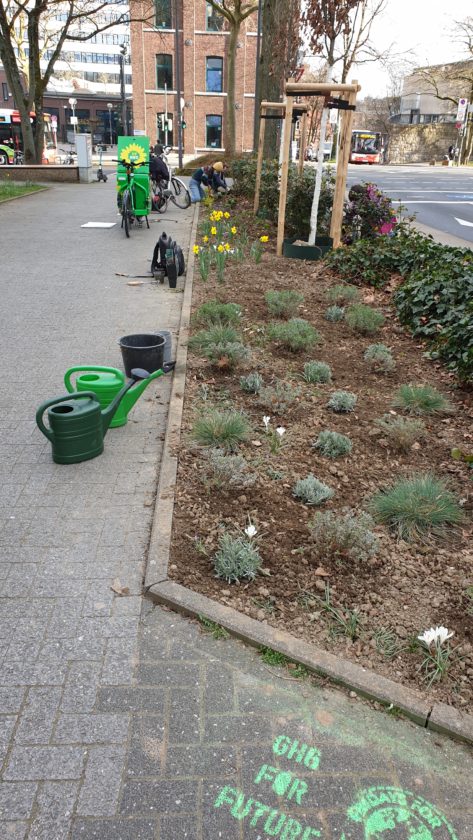
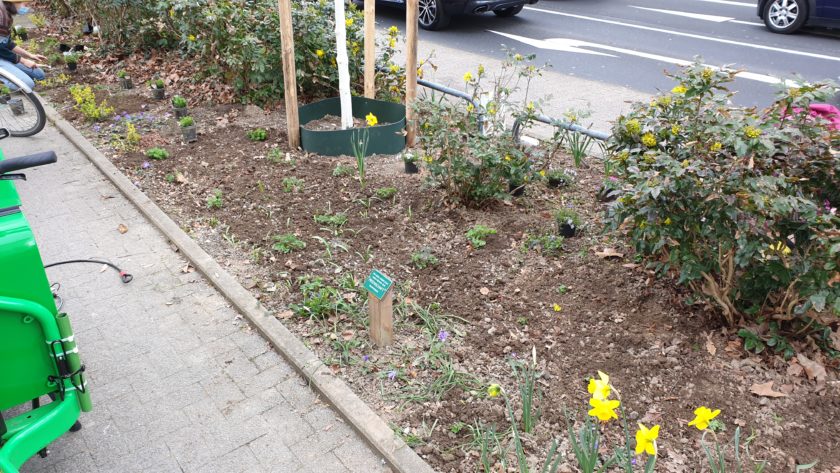

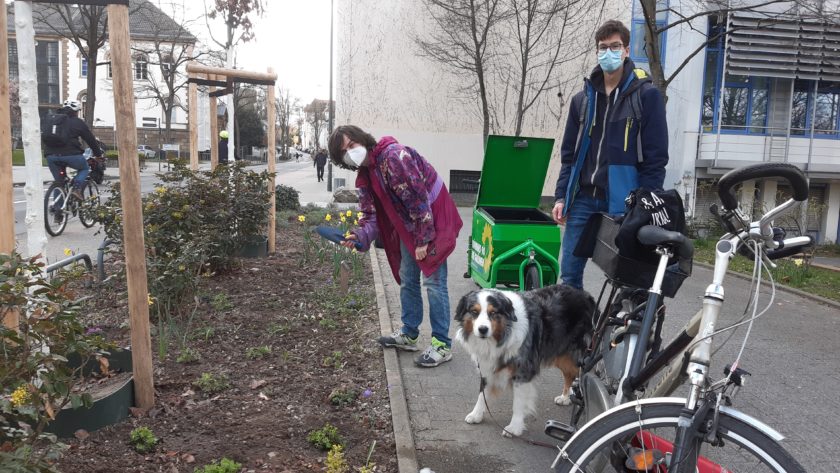
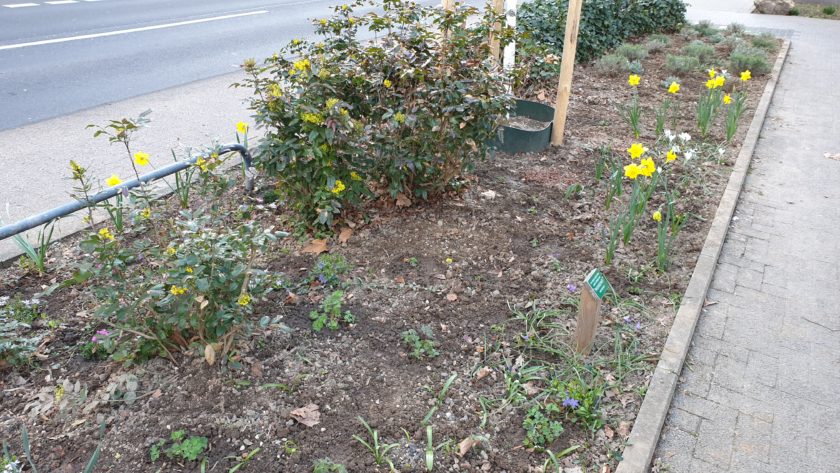
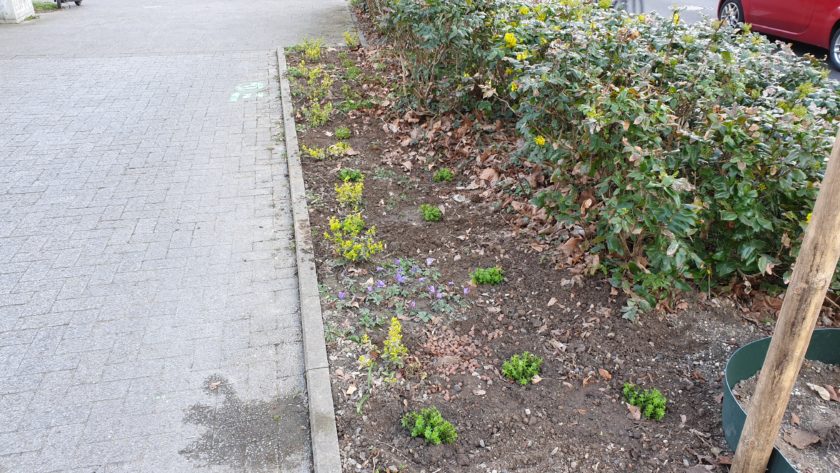
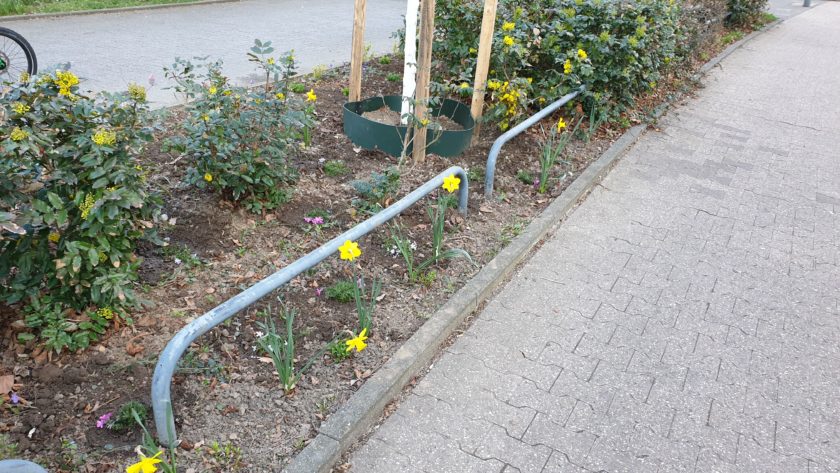

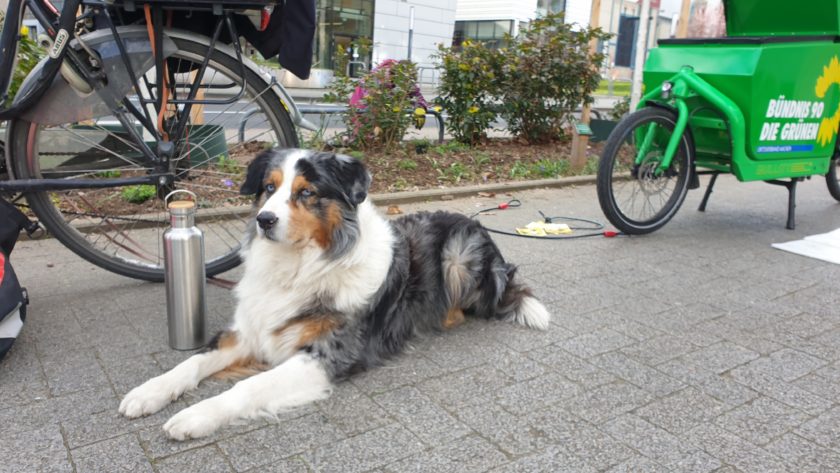
20.03.2021
Today we did some weeding for the first time this year and loosened up the soil so that we can soon continue planting the bed.
In addition, the first of the flowers we planted as bulbs in November are in bloom.
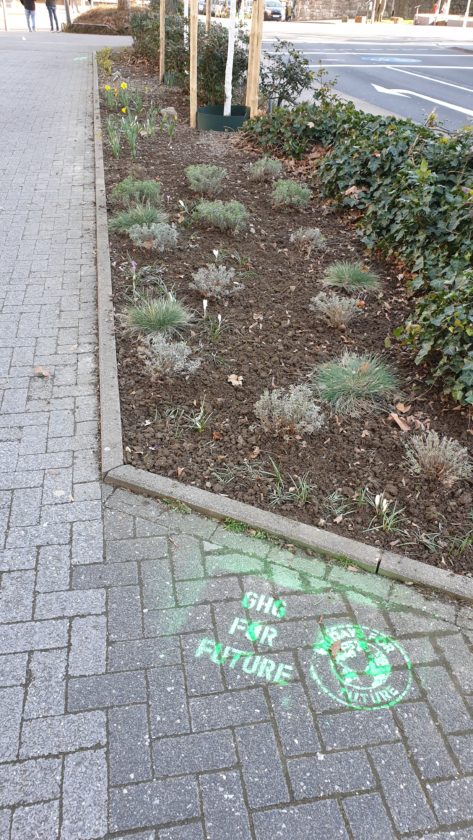

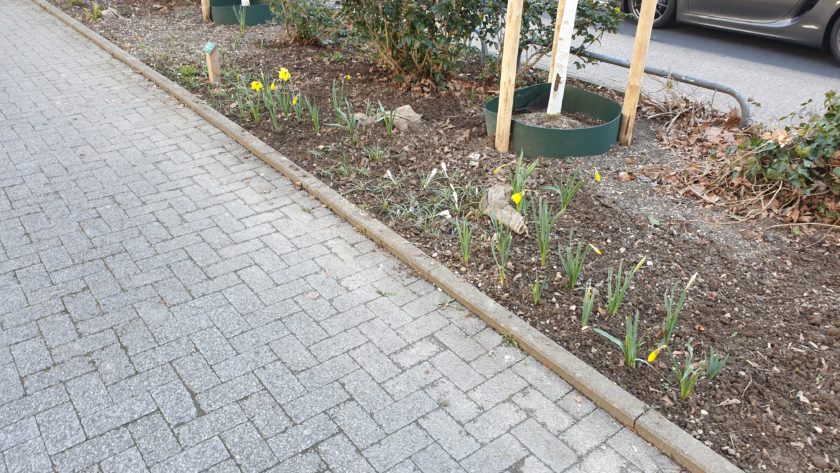
06.11.2020
Now we have also removed the faded sunflowers and spread the seeds on the bed. Either new sunflowers will grow there next year or the birds will be happy about some tasty sunflower seeds 😊.
We also pruned the rest of the lavender and removed some leaves so that the plants underneath get some light again.
27.10.2020
The city wants to plant two trees in our bed. On the one hand, we are happy about this because we would like to see more green in the city and on campus, but unfortunately they simply dug two holes and replaced the soil there with “tree planting substrate” without informing us in any way beforehand or coordinating the action with us. That’s why a few of our ground covers and some flower bulbs have disappeared with the original soil…
UPDATE: The city has assured us that they will replace the plants.
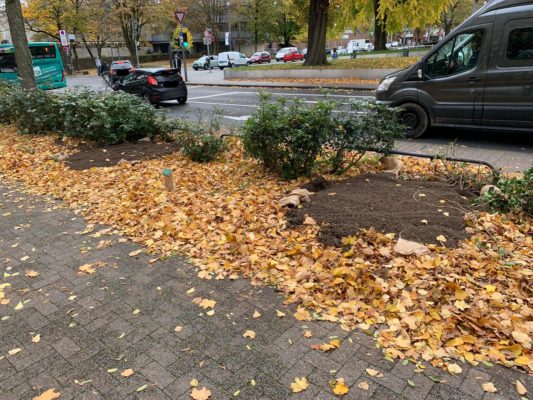
25.09.2020
This afternoon we met again after the FFF demo and removed the (wild) flowers we had sown in spring, as they had all faded by now and some had already dried up. Some of them will hopefully come back next year, as the mixture is perennial. We were also able to completely remove the weeds that were growing in between without any problems.
Afterwards, we planted about 350 bulbs in the now rather bare area. They are divided (not necessarily evenly) among the following species: Narcissus , Galanthus (snowdrop), Muscari, Crocus and Anemone. Most of them are particularly bee-friendly, naturally winter-hardy and perennial. At the moment the bed looks rather bare, but in spring (from February / March) the flowers will shoot out of the ground and bloom before the wildflowers grow again or we can replant something.
10.09.2020
Today we removed some weeds and pruned the part of the lavenders that had already faded so that they can form new shoots and flower a little earlier next year. The other part was already partially faded, but the lavenders have even sprouted again due to the warm weather and are still flowering at the moment, so we will prune them later.
We ended up with quite a large pile of green waste, which we were able to give to the gardeners of the RWTH who were working around the corner and who dumped the “rubbish” where the RWTH collects all green waste. It’s better there than in the bins behind the library, as they only have residual waste and paper, which should definitely be reconsidered.
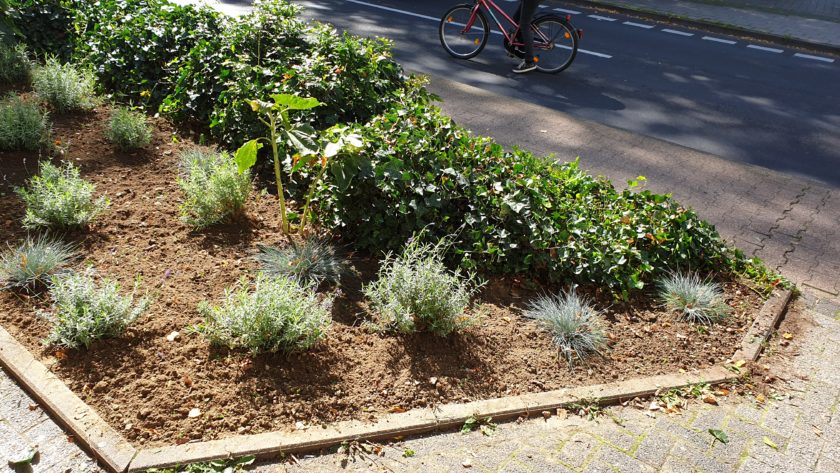
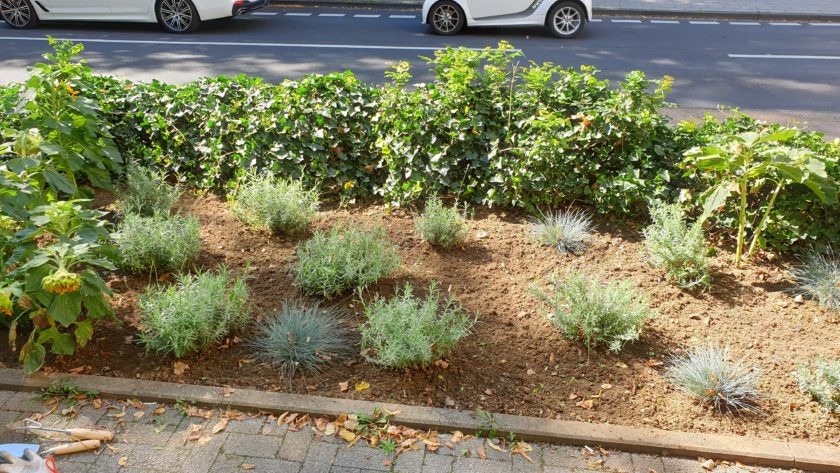
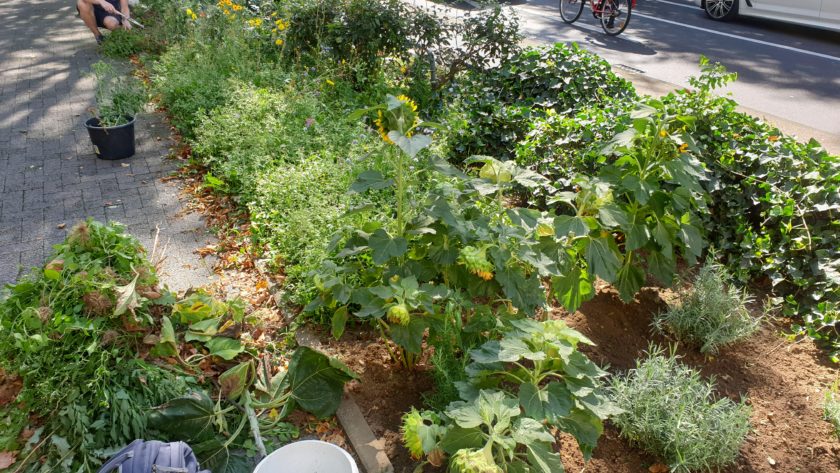





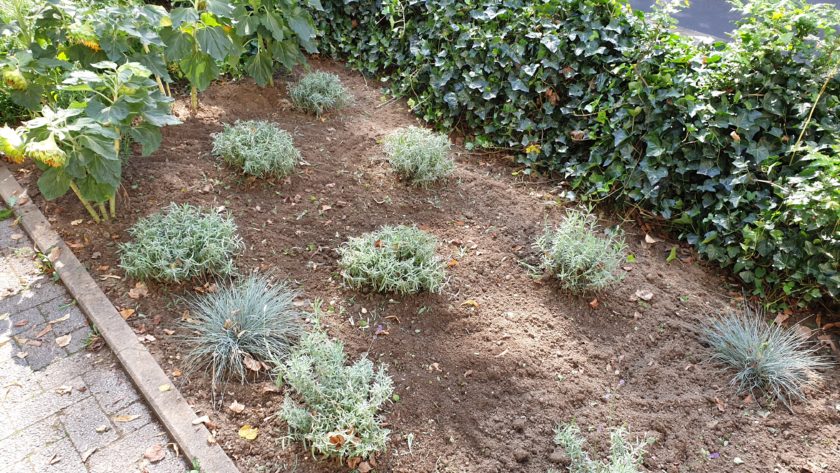
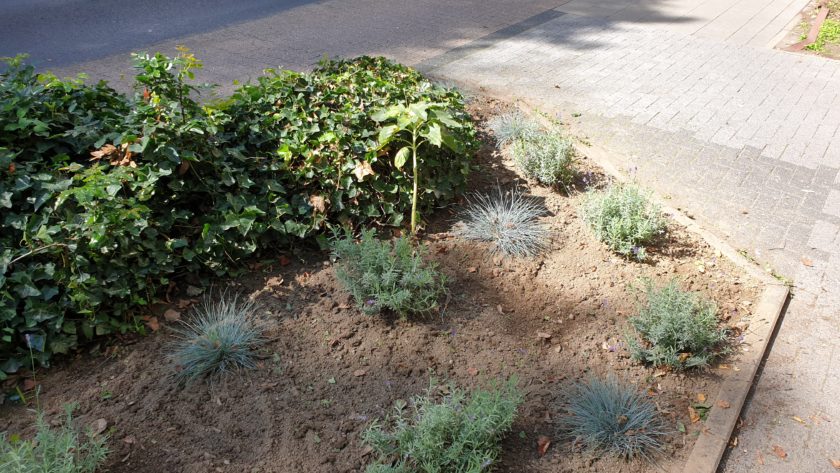

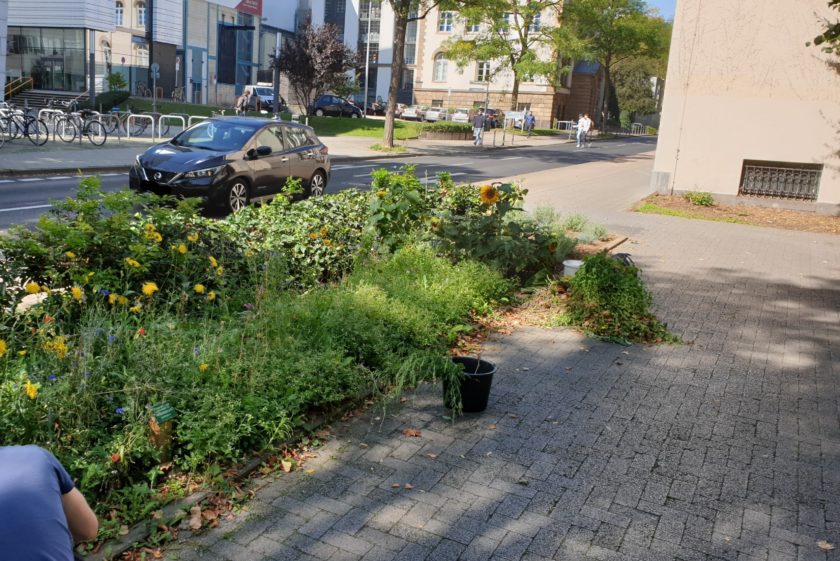

13.08.2020
A lot has grown in the last few weeks. Now we have removed “black nightshade” and “melde” from the bed, because especially the black nightshade is very poisonous. Besides, once these have formed seeds and then got into the soil, they are germinable for a very long time (up to 40 years) and then they come back every year.
In the meantime, we have weeded from time to time so that the lavender and the ground cover from don’t become too overgrown, and we still water them regularly. But with the exams, you can’t always keep up.
26.06.2020
Since we didn’t get everything done last time, we met again today to weed. Especially at the lavender and the ground cover in the front area, we got down to work.
You can already see progress in the growth: Most of the butterfly flowers have germinated and are growing well, unfortunately you can’t see much of the columbines, nor of the forget-me-nots, but some of the shade flowers have also germinated. It was probably just too warm and sometimes we didn’t water quickly enough. When you sow plants, the soil has to stay moist all the time, which was difficult in the warm weather. At least the butterfly flowers are growing well. Some of them have a lot of “weeds” in between, but depending on the species, some of them bloom quite nicely, so we leave some of them, such as the “French weed” and the “dandelion”, for now and see what happens.
Because of the persistent heat, we still have to water every one or two days.




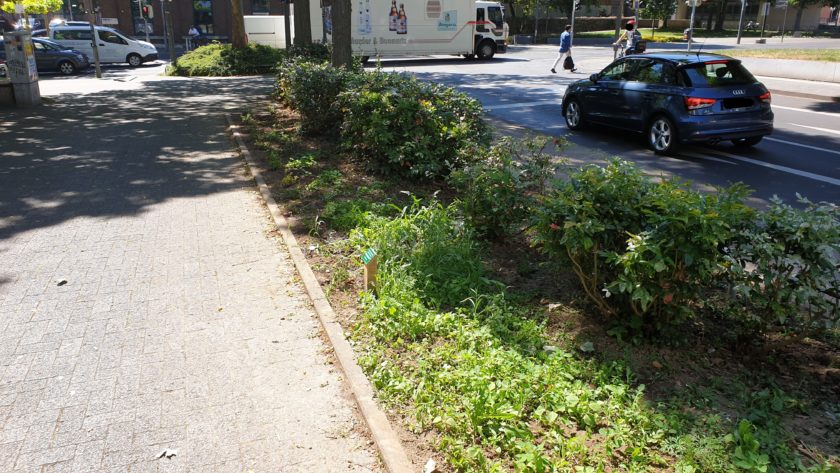

20.06.2020
Slowly the weeds are taking over, as you can see in the photo. Where the lavender and blue fescue have been planted, you can easily distinguish the weeds from what we have planted. In the other places where we have sown flowers, this is not yet possible. So for the time being we just let it grow.😉
In between, a passer-by just came by and brought us ice cream “because we have to weed in the sun”. There are really nice people!

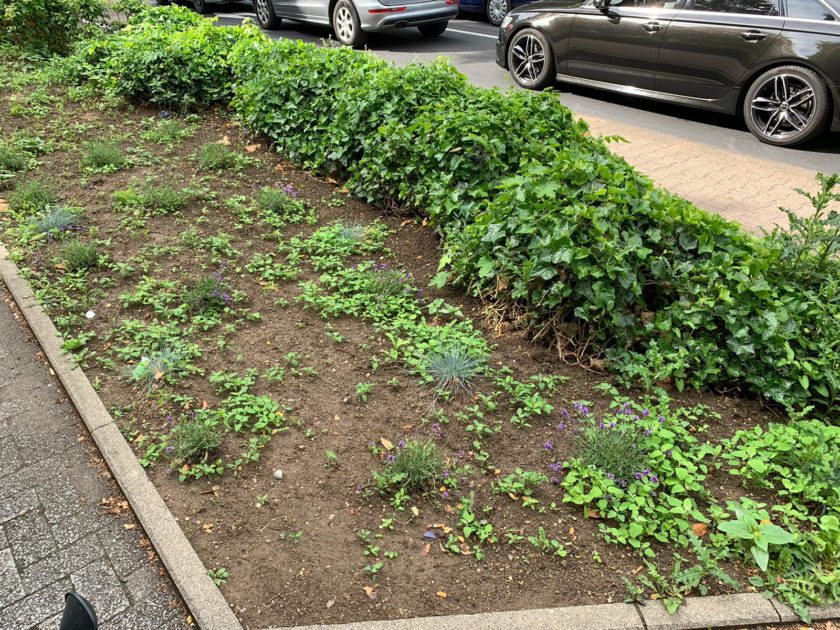
16.05.2020
Today is finally the day and we can start planting the bed. We have bought the following plants: Lavender, ground cover “vinca minor” and blue fescue, as well as a number of bags with seeds of columbine and wood forget-me-not. We also bought two seed mixes: Butterfly Flowers and Shade Flowers. Actually, we wanted to plant cranesbill, as it flowers very often and for a long time, and we didn’t want to sow the columbines either, but bought them as pot plants, but unfortunately the DIY store didn’t have them (yet).
We chose the plants for their bee and insect friendliness. They also have to be suitable for the location, the (sometimes very stony) soil and be reasonably hardy. It is also important that they are perennial plants so that you don’t have to buy new ones every year.
The city should prepare the bed ready for planting. The team that takes care of the green areas must have gone through it once with the tiller, but apparently only very superficially, which we unfortunately only noticed when we wanted to plant the first flowers. So we had to dig up the partly very hard soil, which was more stone than soil and contained so many stones, “by hand”, i.e. with spade and shovel.
In the front part, we also noticed that about 10 cm below the ground, half a foundation (probably from a former edging stone) runs lengthwise for 4-5 m through the bed… So much for the fact that the city had prepared it ready for planting, but there was nothing we could do about it now, the plants have already been bought and have to go into the ground soon…
So we soon had sweat on our foreheads, because it was very sunny and we had to keep our masks on when we worked closer together. After five hours, we had dug up the whole bed once and could finally start with the actual planting.
When we wanted to water the flowers and fetch water from the library, it was closed and the caretakers were also unavailable, although we had spoken to the university administration about the water supply beforehand. So we had no choice but to fetch water from the AStA, which was much further away, and from the main building.
After almost eight hours of work without much of a break, we were finally done and had planted and sown everything. We were glad that it was done and had imagined that it would be easier, which would certainly have been the case if the city had prepared the bed properly.
Now we have to water every day for the next few weeks so that the soil stays moist and as many of the seeds as possible actually germinate. We fetch the water with watering cans from the library. You have to walk back and forth five or six times with two watering cans so that each plant gets more than just a little water. Unfortunately, the library is closed on Saturdays and Sundays. Hopefully the seeds won’t dry out too much….
Fotos: Simon Roß
According to the city, the bed was prepared ready for planting. At least it doesn’t look so wild now and the bushes have been trimmed a bit. The ivy was supposed to be removed as well, but apparently they forgot.

The bed, for which we have taken over a patronage from the city of Aachen, is located at the corner of Wüllnerstraße / Templergraben, i.e. next to the Super C and in front of the university library. Here you can see the condition of the bed before we started planting it:



